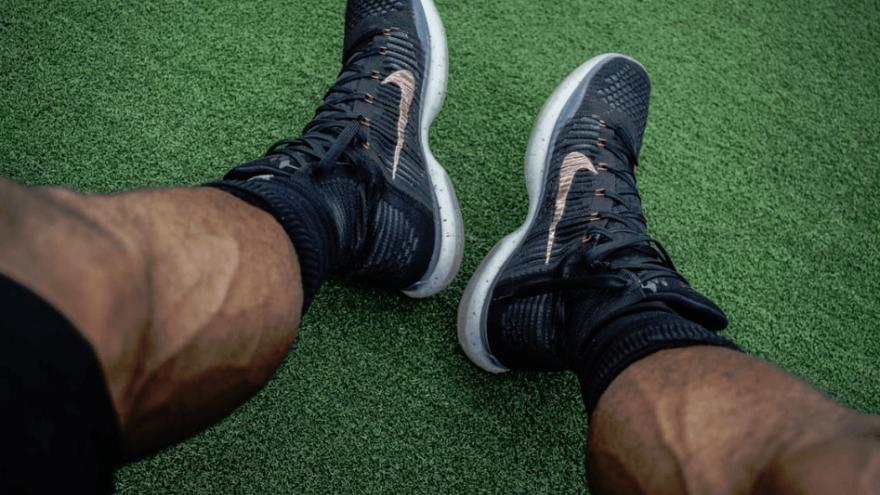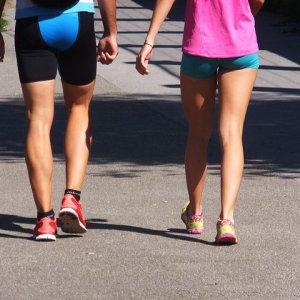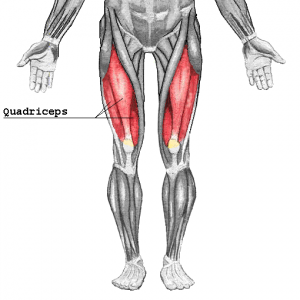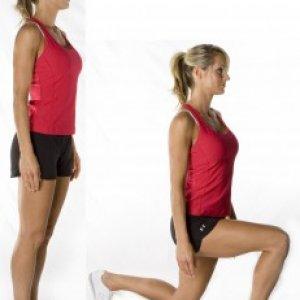Strengthening Your Legs for the Purpose of Running

It doesn’t take a genius to know by just watching that the muscles in the leg are the most used while running. Considering this undeniable truth, it’s in your best interest to first know which leg muscles activate while running, so you can add extra strength sessions to those parts of your body.

Some runners seem to think that the run is enough for working out those muscles in the leg, but they’re wrong. Extra strength exercises are needed. Once that has sunk into your brain, then you can learn and practice some well-known and not so well-known leg exercises that will provide the necessary power that can thwart injuries and make you run harder, faster and longer.
Lets begin. The quadriceps femoris muscle, also simply called quadriceps, is the largest and most potent muscle in the human body. This muscle supports our whole body and allows us to walk, jog, run and do sit-ups. They are also very potent extenders of the knees joints. The muscle is divided in four areas or “heads”, hence the name quadriceps. This muscle is mainly in use when you are moving your leg forward and it helps to absorb the blows to your knees from all the ground pounding.

Once your body has started to move, the spotlight is passed on to the hamstrings, or one of the three muscles in the back of your thighs. The hamstrings are involved in two joints since they are crucial to hip extension and knee flexion. The muscles of your lower leg such as the soleus and gastrocnemius (inner and outer calf) are also very much used during running or any other weight supporting activity with your legs like standing, walking, jumping, etc. The main muscle in this part of the leg is the gastrocnemius, which is responsible for giving the calf a well-built appearance.
The gluteal muscles are also an area you want to add to your strength routine. They are a group of three muscles, which conform the buttocks. Some of the functions of the gluteal muscles are related to the hip joint and they include its abduction, extension, plus internal and external rotation. So, now that you know the basics about how your legs are made up, learning and practicing the moves that will really strengthen the muscles in your legs is the next step.
Let’s start with some of the basics: the traditional sit-up. This is one of the best exercises for leg fortification and the best part is you can do it from your own home. For you to do it correctly you need to stand up with your back straight, your head straight, legs open at your shoulders length. Then flex your knees and move your hip downward until your buttocks are at your calves´ range. You can extend your arms, put your hands right behind your ears or head, or simply cross your arms in your chest making an X over it. Your can increase difficulty with the one- legged squat or if you go to the gym you can add some weight.
Lunges are also very efficient for fortifying your legs. You must first stand with your legs together, hands on your hip, back and head straight. Then put one of your legs forward and flex both of them until you form a 90-degree angle. Try to keep this position for three seconds, afterwards, do it with the other leg.

Doing steps-ups on a step stool is another recommended exercise. Just stand up with your back and head straight, then put one foot over the step stool and elevate your whole body until the leg on the step stool is totally straight and the other one is elevated. Return to the starting position and do the same with your other leg.
The bridge is another good exercise for strengthening your legs and gluteus from the comfort of your own household. Grab a mat or something that supports the weight of your body. Then put it on the floor and lie down on it, facing up. Bend your knees and put your feet flat on the floor. Afterwards elevate your pelvis slowly until you make a bridge.
The calf raise is also very simple. Just stand on the edge of some stairs or of your step stool. For the initial position, your heels should be lower than the step. The next step is to go as high as you can, leaning on your toes and the edge of your feet, and start over.
There are also some excellent methods that have been kind of forgotten. For example, the good old-fashioned rope jumping, which always seems to arouse those threadbare boxing gym´s like the one´s Rocky used to go to. So get yourself a one-way ticket to the old school, buy a jump rope and do a number of reps or a number of timed sets.

Just like in elementary school, bounce with the frontal part of your feet, right before your toes. Also, bend your knees when you jump repeatedly, it’s mainly your calves’ muscles at work, but not just them. Doing this without a rope by putting your feet together and jumping repeatedly is also another monster warm up that your calves will feel. You can also try jumping higher, making your knees reach hip level in the jump, when you fell you’ve reached a higher level. Try to do the latter on a soft surface.
Dragging a sled with some weight on it makes you incline your body in a certain position that makes you necessarily hit the earth with the frontal part of your feet. Do this for enough time and your calves will feel the workout, you will also see them grow, big time!
Related Content:

Flickr photo:
- Mechanical output from individual muscles during explosive leg extensions: The role of biarticular muscles
- Explosive-strength training improves 5-km running time by improving running economy and muscle power
- Leg power and hopping stiffness: relationship with sprint running performance
Latest Articles
 Is Running on a Treadmill Easier Than Running Outside?Runners have their own preferences, whether it is treadmill running, running outside on the road, or exploring trails. So...
Is Running on a Treadmill Easier Than Running Outside?Runners have their own preferences, whether it is treadmill running, running outside on the road, or exploring trails. So... Is It OK to Use Trail Running Shoes on the Road?While trail running shoes can be used on roads, especially in situations where a runner encounters mixed terrains or pref...
Is It OK to Use Trail Running Shoes on the Road?While trail running shoes can be used on roads, especially in situations where a runner encounters mixed terrains or pref... How to Fix Sore Quads After Running?Rest, ice, gentle stretching, and over-the-counter pain relievers can help soothe sore quads after running. Also, ensure ...
How to Fix Sore Quads After Running?Rest, ice, gentle stretching, and over-the-counter pain relievers can help soothe sore quads after running. Also, ensure ... 10 Fruits With The Most Electrolytes to Replace Sports DrinksThese fruits are high in electrolytes such as potassium, magnesium, and calcium, essential for hydration, muscle function...
10 Fruits With The Most Electrolytes to Replace Sports DrinksThese fruits are high in electrolytes such as potassium, magnesium, and calcium, essential for hydration, muscle function...

